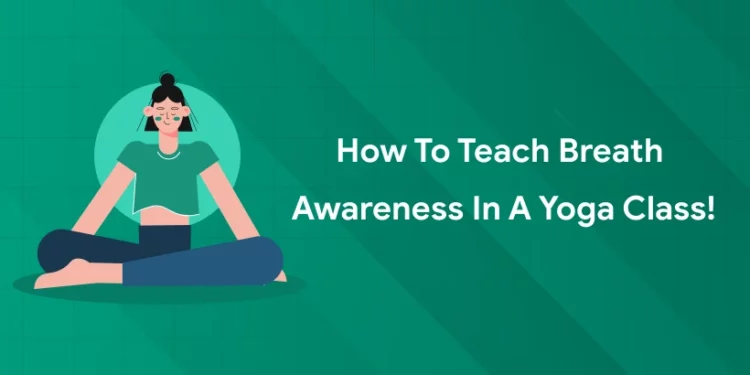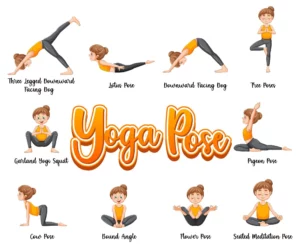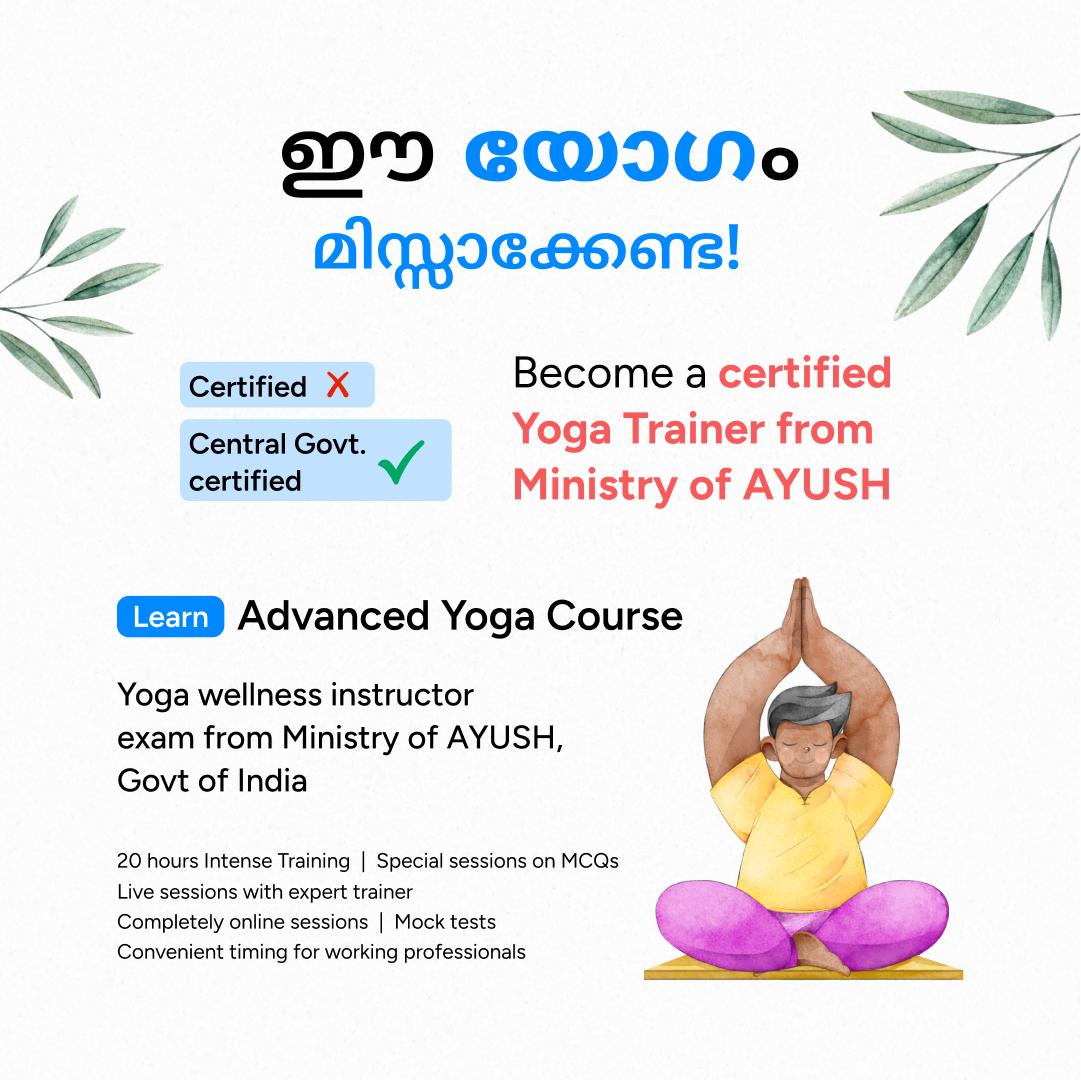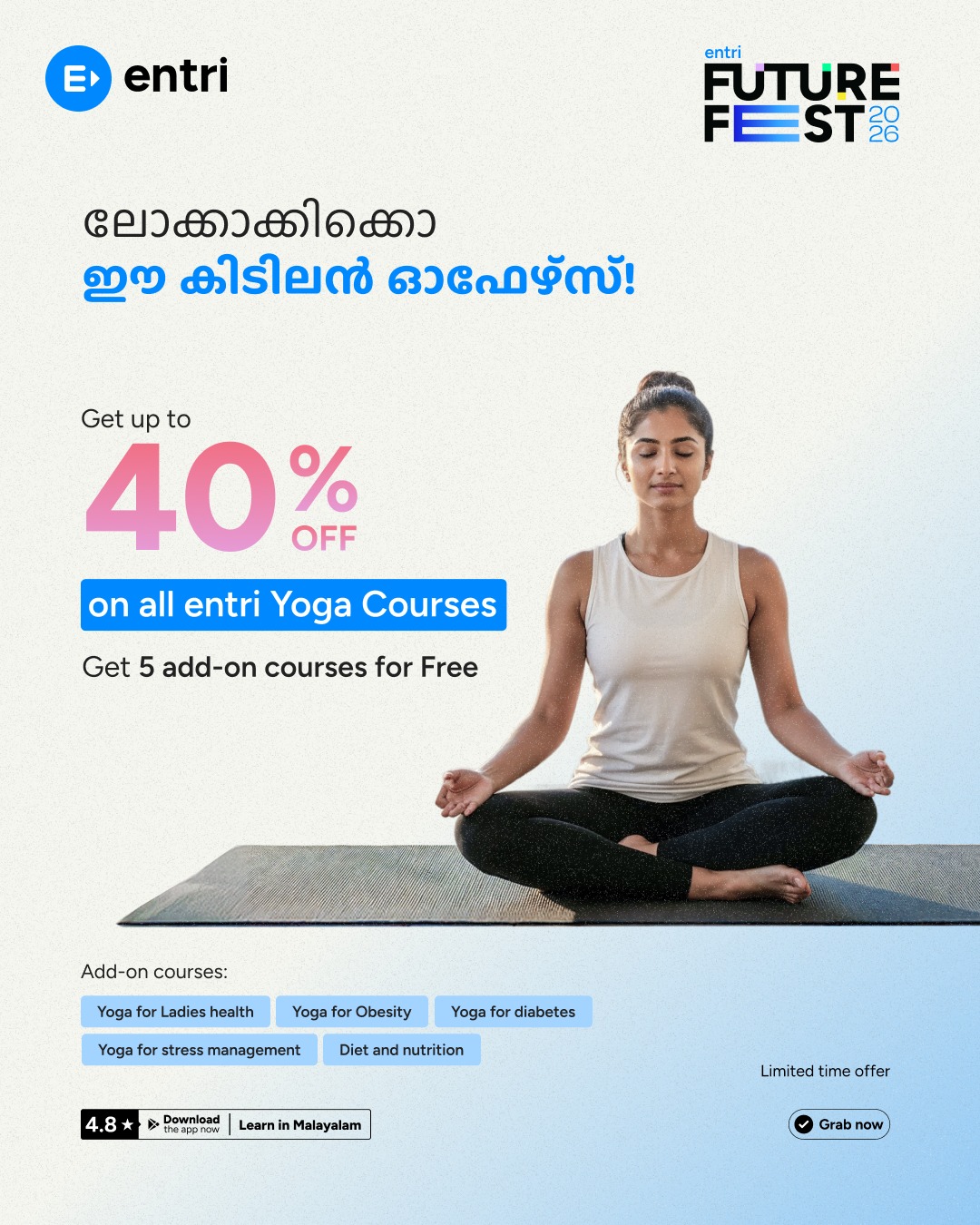Table of Contents
Breath is the foundation of yoga. Without conscious breathing, yoga becomes just another physical exercise. As a yoga teacher, guiding students in breath awareness (pranayama) helps them deepen their practice, reduce stress, and connect mind and body.
Get Certified! Join Our Yoga Teacher Training Course!
But how do you teach breath awareness in a yoga class efficiently? This blog aims to explore useful insights, challenges encountered in yoga teaching, and breathworks for incorporation into different styles of yoga practice.
The Importance of Breath in Yoga
Breath and Asana
1: Which of these is the primary goal of yoga practice?
Biologically
When focusing on the breath during our asana practice, the control of the breath shifts from the brain stem (medulla oblongata) to the cerebral cortex (evolved part of the brain) due to us being aware of the breath. It’s in that moment, when we are aware, when the magic starts to happen. The mind will become quieter and a calm awareness arises.
Emotionally and Energetically
So it is less likely that emotional stress or random thoughts may influence your mind. The whole system, really, rests. The energy, the prana, starts flowing more freely pushing through any emotional and physical blockages and thus freeing the body and mind. Which results in that “feel-good” effect after yoga practice.
So we can safely say that the breath really has that close connection in every point with the overall movement of prana (life energy).
Physically
It involves the breath in any use of energy, and through this alone, we are able to find alignment and release in the structures that hold, perceive, and move the body. Awareness of the breath can release joint-compression factors and other imbalances in one’s postures and attitudes. Breath-awareness is equally the primary tool toward serenity of movement through the flow of Ashtanga Vinyasa practice.
Breath and mind
If you’ve engaged in some serious meditation, you would have noticed and seen the following: When breathing moves, the mind moves as well. And of course, it also works in the opposite way; when the mind moves, the breath moves as well.
In essence, breath becomes a kind of tool with which to access the subtlest layers of our mental and emotional existence. Whenever the breath changes, it tells you that something is taking place in the mind: when something disturbing comes into the mind, for instance, the breath will reflect that back to you.
You’ll then realize that mindfulness and awareness of breathing will, because of the close tie between breath and mind, provide insight into the nature of the mind. Insight into the nature of the mind leads, in turn, to liberation from suffering.
Join Now for Montessori Teacher Certification Course!
Ujjayi breath
Unlike many pranayama types practiced alone, this practice usually relates to physical forms. Ujjayi breathing is the type of breath that’s practiced in Vinyasa/Ashtanga styles. It is the main breath considered while flowing with and when practicing strenuous poses. When cooling down and entering more relaxing poses, that’s the moment breath starts to release from this way of breathing and becomes more natural. Ujjayi breath could be characterized both refreshing and energizing. Sometimes I find myself spontaneously breathing this way in deep meditation or during deep absorption or concentration.
Become a Certified Yoga Instructor
Yoga Teacher Training Course by Entri App: Master authentic yoga techniques, earn certification, and build a successful career as a professional yoga instructor.
Join Now!Why Breath Awareness Matters in Yoga
Breath is the bridge between the body and mind. In yoga, we call this prana—the life force energy that flows through us. When students learn to control and observe their breath, they experience:
✅ Better focus – Reduces mental distractions.
✅ Deeper relaxation – Activates the parasympathetic nervous system.
✅ Improved movement – Breath guides alignment and flow.
✅ Emotional balance – Helps release tension and anxiety.
Without breath awareness, yoga loses its meditative and transformative power.
How to Teach Breath Awareness in a Yoga Class!
As a yoga instructor, guiding students to connect with their breath can elevate their experience and deepen their mind-body connection. Here’s how you can effectively teach breath awareness in a yoga class.
1. Set the Tone with an Opening Breath Practice
Begin the class with a few minutes of conscious breathing. Invite students to sit comfortably, close their eyes, and focus on their natural breath without trying to change it. Encourage them to observe the sensations of inhalation and exhalation, bringing their attention to the present moment.
2. Introduce Simple Breath Techniques
Depending on the level of the class, introduce beginner-friendly breathwork (Pranayama) techniques, such as:
- Diaphragmatic Breathing (Belly Breathing): Guide students to breathe deeply into their belly, expanding the diaphragm on the inhale and contracting it on the exhale.
- Ujjayi Breath (Victorious Breath): Encourage slow, audible breath through the nose, slightly constricting the throat to create a soothing ocean-like sound.
- Nadi Shodhana (Alternate Nostril Breathing): Demonstrate how to balance energy by alternating breaths between nostrils, promoting focus and calmness.
3. Incorporate Breath Awareness into Asana Practice
As students move through postures, remind them to synchronize breath with movement. Cue them to inhale during expansive poses (e.g., reaching arms up) and exhale during contractions (e.g., forward folds or twists). Reinforce the idea that the breath should guide the movement rather than the other way around.
4. Use Verbal Cues to Reinforce Mindfulness
Throughout the class, gently remind students to check in with their breath. Simple cues like “inhale deeply,” “soften the breath,” or “notice your exhale” can bring their attention back to breath awareness.
5. End with a Breath-Focused Relaxation
During Savasana or meditation, encourage students to let go of conscious breath control and simply observe their breath as it flows naturally. This reinforces a sense of inner stillness and integration of the practice.
Preparing to Teach Breath Awareness
Before diving into techniques, set the right environment:
1. Create a Calm Atmosphere
- Dim lighting, minimal distractions.
- Soft music or silence to encourage inward focus.
2. Lead by Example
- Demonstrate smooth, audible breathing (Ujjayi breath).
- Your breath should be louder than your students’—this helps them follow along.
3. Start with Observation
- Ask students to simply notice their natural breath before controlling it.
- “Feel the cool air on the inhale, warm air on the exhale.”
Breath Awareness Techniques for Yoga Classes
1. Basic Breath Exercises
A. Natural Breath Observation
- Have students lie in Savasana or sit comfortably.
- Guide them to observe their breath without changing it.
B. Diaphragmatic Breathing
- Place hands on the belly, feel it rise on inhale, fall on exhale.
- Great for beginners to understand deep belly breathing.
C. Counting the Breath
- Inhale for 3 counts, exhale for 4 counts.
- Gradually increase the length (e.g., 4-6 or 5-7).
2. Linking Breath with Movement
A. Sun Salutations (Surya Namaskar)
- “Inhale, arms up; exhale, fold forward.”
- Keeps the practice fluid and meditative.
B. Static Poses (Warrior II, Tree Pose, etc.)
- Encourage slow, steady breaths in holds.
- “Breathe into your ribs, expand with each inhale.”
3. Guided Pranayama Techniques
A. Ujjayi Breath (Ocean Breath)
- Slight constriction in the throat, creating a soft “ocean sound.”
- Helps maintain rhythm in Vinyasa classes.
B. Nadi Shodhana (Alternate Nostril Breathing)
- Balances energy and calms the mind.
- Best at the start or end of class.
C. Box Breathing (4-4-4-4)
- Inhale (4), Hold (4), Exhale (4), Hold (4).
- Great for stress relief.
Become a Certified Yoga Instructor
Yoga Teacher Training Course by Entri App: Master authentic yoga techniques, earn certification, and build a successful career as a professional yoga instructor.
Join Now!Adapting Breathwork for Different Yoga Styles
- Vinyasa Flow – Strong emphasis on Ujjayi breath with movement.
- Hatha Yoga – Longer holds with deep, mindful breathing.
- Restorative/Yin Yoga – Slow, relaxed belly breathing.
Final Tips for Yoga Teachers
✔ Keep cues simple – Avoid overwhelming students.
✔ Encourage self-awareness – “Notice how your breath changes in each pose.”
✔ Practice yourself – A teacher who breathes mindfully inspires students.
✔ End with a breathing meditation – 2-5 minutes of guided breathwork in Savasana.
Conclusion
Breath awareness transforms yoga from a workout into a moving meditation. By incorporating these techniques, you’ll help students cultivate mindfulness, reduce stress, and enhance their practice.
Try these tips in your next class and observe the difference!
💬 Have you tried teaching breath awareness? Share your experiences below!


























